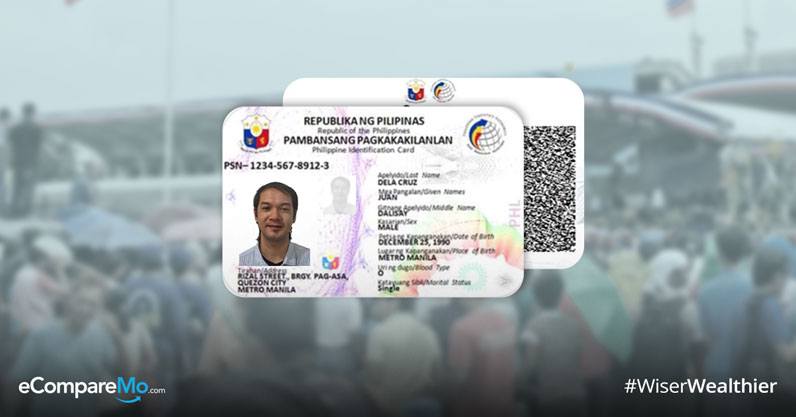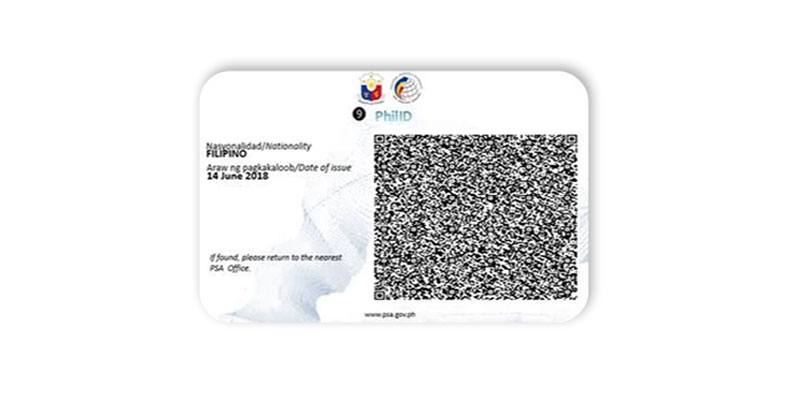How To Apply For The National ID 2019
4 min readThe government is set to pilot the Philippines’ national ID system by September 2019.
Presidential Spokesperson Salvador Panelo told media outlets that, by the end of 2022, the government intends to have 107 million Filipinos registered on the system.

The national ID system was signed into law last August. According to the Philippine System Identification Act (PhilSys Act), the government will create “a single official identification card for all citizens and foreign residents.â€
All essential IDs will be rolled out into a single identification card known as the Philippine National ID, or the PhilSys ID.
As of this writing, applying for major government IDs—the Social Security System ID, PhilHealth ID, Bureau of Internal Revenue (BIR) ID, and the like—requires a trip from one government office to another. However, this is soon to change with the implementation of the National ID system.
How can you apply for one? Here’s everything that you should know about the Philippine National ID System: the requirements, the application process, and some facts.
(Read: Guide To The Most Powerful IDs In The Philippines – And How To Get Them)
What is the Philippine National ID System?
The Philippine System Identification Act or PhilSys Act was signed into law in August 6, 2018 under Republic Act 11055. It basically creates one official national ID.
The idea behind the PhilSys Act is to allow for seamless and more efficient delivery of government service in order to streamline bureaucracy and enhance administrative governance.
With the implementation of the Phil ID, cardholders can transact with different government agencies such as the BIR, GSIS, PhilHealth, Pag-IBIG, SSS, and many more, with just the use of this single ID replacing all other current IDs.
Who are eligible for a National ID?
- All Filipino citizens
- Overseas Filipino Workers (OFWs) whether land-based or sea-based
- Dual citizens residing in other countries
- Resident aliens (foreigners) residing in the Philippines
What are the requirements needed?
Applicants need to completely fill out and submit the PhilSys Application Form, supported by the presentation of any of the following primary documents:
- Original copy of the applicants Birth Certificate. This should have been issued by the Philippine Statistics Authority(PSA) (formerly the National Statistics Authority (NSA))
- One government-issued ID. This should have the full name of the applicant, a photo, and signature or thumbmark
- A valid Philippine passport
- Unified Multi-purpose Identification or UMID card as issued by SSS or GSIS
- Other equivalent documents approved by the PSA
- For resident foreigners: Alien Certificate of Registration or ACR ID during the application
What personal information are included in the National ID?
The following information related to the applicant will be collected and stored in the Phil ID database:
I. Demographic Data

- Full Name
- Gender
- Date of Birth
- Place of Birth
- Blood Type
- Address
- Citizenship (Filipino or Resident Alien)
- Marital Status (optional)
- Mobile number (optional)
- E-mail address (optional)
II. Biometric Information

- Photograph
- Full set of fingerprints
- Iris scan
(Read: Adulting 101: A Fresh Grad’s Guide To Employee Requirements And IDs)
Where can I apply to get the National ID?
1. Resident Filipino Citizens
Once operational, the ID can be availed in these regional branches and offices:
- Regional and provincial offices of the PSA
- The Civil Registry Office (LCRO) of any city or municipality
- Government Service Insurance System (GSIS) branches
- Social Security System (SSS) branches
- Philippine Health Insurance Corporation (PhilHealth) branches
- Pag-IBIG or the Home Development Mutual Fund (HDMF) branches
- Commission on Elections (COMELEC), any local or provincial office
- Postal offices, as long as they are under either PHL Post or the Philippine Postal Corporation
- Other government agencies or GOCCs that the PSA will assign
2. Overseas Filipino Workers
- Any Philippine Embassy or Philippine Foreign Service Post
- Other registration centers may be designated by the Department of Foreign Affairs (DFA) and PSA
What are the uses of the National ID?
- Social welfare and benefits granted by the government
- Promote ease of doing business
- Tax-related transactions
- Admission in schools and government hospitals
- Opening of bank accounts
- Registration and voting purposes
- Transactions for employment purposes
- Verifying cardholder’s criminal records and clearances
- Strengthen financial inclusion
- Avoid fraudulent transactions and misrepresentations
- Ease of applications for services offered by the GSIS, SSS, PhilHealth, Pag-IBIG, and other government agencies
- Other transactions defined in the implementing rules and regulations of the National ID System
(Read: Government Documents Now Free For First-Time Job Seekers)
How do I apply for a national ID card?
1. Visit the registration center
Personally visit any of the designated registration centers and fill out and submit a PhilSys Registration Form (Form No. 1) and along with the necessary documents.
2. Register your biometric information
Provide your biometric information (front-facing photograph, fingerprints, and iris scan), as well as your demographic information at the registration center.
3. Wait for the PhilSys Number
If both the biometric and demographic information turn out to be unique, then a PhilSys Number (PSN) will be generated. If not, further verification will be needed.
4. Wait for the release of the National ID card
Once your PSN is issued, the ID will be given and the application is completed.
Please take note that availing of the National ID is free of charge for all Filipinos and foreign residents in the country. Applications for the said IDs has not yet been opened. Keep yourself posted for more details regarding the National ID system.
